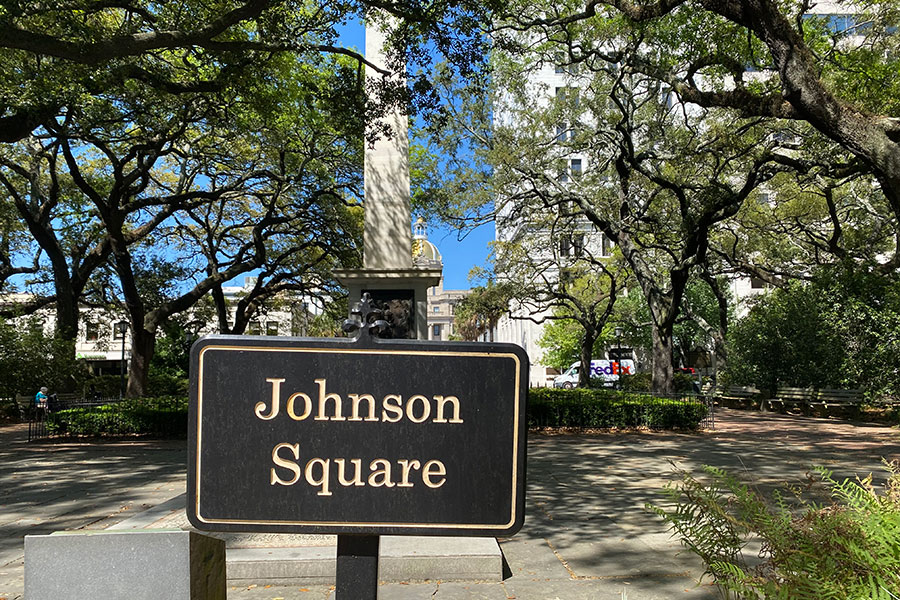Johnson Square
Savannah Squares > Johnson Square

About This Square
Photos
This is the very first square created in Savannah, laid out in 1733 by the founder of the city, James Oglethorpe. It was named after South Carolina’s governor Robert Johnson and is the largest of the city’s 22 remaining squares.
At the center of the square is a monument to Nathanael Greene, a Revolutionary War hero who was second in command to George Washington. However, the 50-foot tall obelisk at the center of Johnson Square was not originally intended to honor Greene.
Greene died in 1786 and was interred in Colonial Park Cemetery, however his remains were “lost” after Union Army soldiers vandalized the cemetery during the Civil War and not rediscovered until 1901.
Meanwhile construction on the monument started in 1825, when the cornerstone was laid by none other than the Marquis de La Fayette. Financial issues delayed its completion until 1830 but when it was done, it was not dedicated to anyone specific, but was unofficially considered a dual monument to Greene and another war hero, Casimir Pulaski.
In 1886, the the monument was formally dedicated to Greene when inscriptions and his name were added. His remains, once identified in 1901, were moved here and laid to rest undeneath it.
And yes, there is a Greene square named after the same guy, but the monument and his body are located here in Johnson Square. Why? The answer to that is lost to time.
There are several other notable features of this square.
On the southeast corner of the square is the Johnny Mercer bench, named in honor of the singer, one of Savannah’s famous sons. It is inscribed with a simple caricature of his likeness along with one of his most famous song lyrics, “Buddy I’m a kind of poet and I’ve gotta lotta things to say” from “One More for the Road” and the names of many of his hit songs including “Moon River” and “Autumn Leaves.”
On the southern side of the square, near the intersection of Bull Street, is a sundial in honor of William Bull, one of the original settlers of Savannah. This one was put into place in 1933 to replace the original, which had been damaged over time. Look closely and you’ll see one of Bull’s early maps of the city.
There are also two fountains, one on either side of the park, which were put in the places where community ovens once stood. Back in the early days of Savannah, most homes didn’t have their own kitchens, so people would bring food to the community ovens to cook.
Notable buildings on the square include the Christ Episcopal Church, which was built in 1838 for the congregation that was considered to be the first in Savannah, dating back to 1733; and the Johnson Square Business Center, the city’s first “skyscraper” built in 1911, one of many bank related businesses that operated here over the years.








